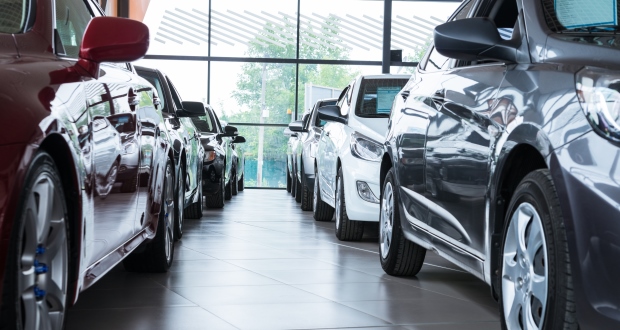 The digital element of car sales is becoming more ingrained in the day to day operation of automotive retailers, with customers expecting a seamless screen to showroom experience from both new and used dealerships.
The digital element of car sales is becoming more ingrained in the day to day operation of automotive retailers, with customers expecting a seamless screen to showroom experience from both new and used dealerships.
For John Hogan, CEO & Co-founder of RWA Automotive, the 2022 market was defined by continued supply shortages of new vehicles, a high level of profitability in used cars and a significant move to electric vehicles, which he said will have a detrimental effect on aftersales in future years.
He added: “From a new car point of view, allocations of vehicles have been problematic and managing schedules and expectations have been very important but generally, demand has exceeded supply.
“Used cars is where we have seen the most intense management effort and activity. Directors got a taste of record profits in 2021 and everyone has did their best to hold these for 2022, which for the most part was not possible. We’ve had many customers do outstanding jobs in beating the market in 2022 in terms of price, stock turn or both. This has been achieved using pricing algorithms based on retail ratings.
“With so many moving parts across many systems, we’ve seen a massive uptake in business intelligence and data analytics to pull all this information together and provide actionable dashboards and reports to all the stakeholders in the dealer businesses. Dealerships want to harvest all the opportunities and the tools are there now to make all this possible.”
Looking at 2023, Hogan believes that in terms of business profitability, used cars are going to dominate again. He added: “We are going to see a greater level of sophistication and my prediction is that UK car dealerships will be global leaders in terms of business practices in this area.
“We have already seen the use of data in pricing algorithms become mainstream in 2022 and this will go to another level in 2023 with the introduction of artificial intelligence (AI). With the current pricing policy best practices I think we are seeing about 80% of the optimal opportunity being harvested. With AI, this will take it to the next level by calculating an optimal price at vehicle level rather than at retail rating band.”
Darren Sinclair, CCO, iVendi, felt that 2022 saw the continuation of two key post-pandemic trends; digital transactions and the impact of disruptors. He said: “While they [disruptors] are having a mixed time as businesses, they have still helped to popularise the idea of using a sophisticated digital journey to gain a competitive advantage.
“The question for established dealers is how they should react to these changes? In our view, the best response is accepting that buyer behaviour is evolving, and retailers need to adopt the best technology available alongside achieving a genuine change in culture. By doing this, they can compete against any other motor retailer and emulate the best digital customer experiences available anywhere. With the right technology and the right attitude, traditional dealers can thrive.”
When it comes to what digital trend will stand out this year, Sinclair felt that all the signs point to ensuring compliance with Consumer Duty. He added: “Dealers need to be putting systems in place that meet the new FCA regulations by working closely with their technology providers and their lenders. As far as possible, the digital journey that customers take should be tracked, recorded and auditable so that if the need arises, you can show that their needs are being put first.
“We believe management information will play a key part in helping both lenders and retailers prove compliance and show continuous improvement when it comes to Consumer Duty. It provides the data and insight to help better understand how good vehicle buyer outcomes are being delivered and where improvements need to be made.”
When engaging with the customer, Sinclair said that the single most important thing is to incorporate digital and real-world elements.
Charlotte Murray, commercial director, Marketing Delivery, believes that it is important that dealers accept a “digital-first approach” and strive to personalise their contact with customers with accurate and timely information. On keeping up to date with the latest tends in the digital world, Murray advises dealers to ask questions, talking to experts about how digital assets can best be used to further their businesses.
Alistair Horsburgh, chief strategy officer at CitNOW Group, said that the key takeaway from 2022 was the knowledge that customers want a seamless online to offline experience, which also needs to be seamless for the retailer. He added: “Omni-channel is something that has been discussed for many years, however it is still prevalent, and we believe the experience should be defined by the customer enabling them to decide how much of the process is conducted online or offline. To provide this, the retailer must have the right technology and processes in place to facilitate personalised customer journeys. People are a key part of the transformation; our survey highlighted that 42% of car buyers value good customer service and it is the salespeople who will build those meaningful relationships with the customer.”
When it comes to important features, for Horsburgh photo and video remain essential in creating and maintaining a robust relationship between sales executives and customers.
He said: “With strong consumer demand for high-quality video and imagery as part of the vehicle sales process, retailers should pay attention to the quality and consistency of their imagery used on e-commerce sites.
“Retailers should make sure staff are using digital tools in the right way and call on the relevant suppliers for training where required. We’d also advise retailers to consider how and when they use the digital tools available, throughout the vehicle purchasing journey, as each customer will have individual requirements and preferences. Our recent industry research found that most retailers polled (68%) said that their most valued digital tool is the dealer management system.”
Catherine Faiers, chief operating officer, Auto Trader, also highlighted the positive sentiment towards online buying. But, she said, it has lessened recently: “Fuelled by lockdown conditions, consumer appetite for online retailing increased significantly over a very short amount of time. However, over the last year, we have seen signs of this appetite softening; in July, the proportion of people who found end-to-end appealing had dropped back to 66%.
“While end-to-end retailing growth may be stalling, we’re seeing growing demand for an omnichannel service, which seamlessly blends the best of the digital experience with the best forecourt experience. Many still absolutely want to experience the car, to test drive it, or get advice from a product expert, but our research shows that people want to do more of the jobs necessary to purchase it online. As a result, we’ve seen a significant increase in intent to purchase from people arriving on forecourts, especially among those that are contacting retailers in advance. Thanks to the increasing preference for car buyers to do most of the necessary car buying ‘jobs’ digitally prior to any retailer visits, more buyers than ever are turning up qualified and well informed to make a purchase. The days of the indecisive tyre kicker are well and truly behind us. Crucially, most people are still visiting the forecourt, so there’s a huge opportunity to understand their needs and tailor their experience. The best experience for all consumers is one where the forecourt and online experience are connected.”
For Sepi Arani, commercial director, carwow, 2022 was a year of re-forecasting, working hard to balance supply and demand in the face of turbulence caused by on-going chip shortage, inflationary pressures and the conflict in Ukraine.
He said: “Positively for our industry, so far in 2023 we’ve seen demand returning, despite the wider backdrop of the cost-of-living crisis and rising interest rates. Most importantly, supply constraints are easing up. Cars are now reaching customers and dealerships with shorter lead-times than before, providing encouragement to those that may have put off buying a vehicle last year.
“The unmistakable trend this year is the rise of the new entrants. There’s going to be a tide of new brands landing on UK shores in the next 24 months and it’ll be a fascinating time for the industry as consumers are presented with choices they’ve never had before.
“Time will tell who gets it right, in terms of product offering and pricing, and marketing and communications campaigns. UK consumers are brand-led, as seen by the dominance of the German marques to date. So it’ll take more than just product and price point to really take a share of the UK market.”
It is social media that Arani thinks will dominate in 2023, with TikTok going from strength to strength, having just launched a new offering and entered the search advert market to rival Google and Microsoft.
He added: “Many see TikTok as a time sink; a platform for viral dances or entertainment at best – but in reality, it is shaping how modern day consumers search for, interact with and even buy from brands and this will go from strength to strength in 2023. It’s something that we’ve seen grow rapidly, with carwow’s TikTok channel now having 890K followers and our content garnering 11.8m likes.”
On embracing digital development, Arani acknowledged that the automotive sector hasn’t always been known for leading the way in digital developments. He concluded: “Although our industry is still going through rapid change when it comes to e-commerce, the first online purchase in the UK was as far back as 1984, from Gateshead of all places.
“The best way to keep pace with digital developments is to look at the various ways we engage with businesses outside of automotive in our daily lives. Whether that be advancements in the speed of apps like Deliveroo and Amazon, which can provide fixed-time deliveries in as little as 15 minutes, or the quality of customer experience offered from online luxury retailers such as Mr Porter or Farfetch, which help their users discover new brands. Inspiration and learnings can, and should, be applied from all over the global e-commerce ecosystem.”

Charlotte Murray, Commercial Director Marketing Delivery
Meaningful and productive communication
The volume and sophistication of digital interactions with customers and prospects in motor retail grew once again last year, and the first few months of 2023 have seen demand for our marketing automation platform, VoiceBox, reach record levels for social media advertising and email marketing campaigns, indicating a return to seasonal sales trends.
With retailers now accepting that they must have a digital-first approach, we anticipate that this year’s stand-out trend will be ensuring communications are more meaningful and productive – and that means making them personalised, relevant and timely. Every enquiry, from a valuation to a service booking, should receive a rapid response containing accurate information and a call to action to which the customer can easily respond.
The key to engaging and attracting customers remains data accuracy. Whether it’s processing enquiries, re-engaging ‘lost’ leads or reminding a customer of their service or MOT date, success depends on accurate data. But data doesn’t need to be intimidating; Marketing Delivery can support dealers with data cleansing and ongoing maintenance, and we are receiving a growing number of requests for data audits.
The digital world is evolving rapidly, and keeping up to date with the latest trends can be daunting. Always ask questions and stick with people who get your business, your needs, and your customers. We advise dealers to talk to trusted sources, and all our clients have dedicated account managers for exactly this reason.





